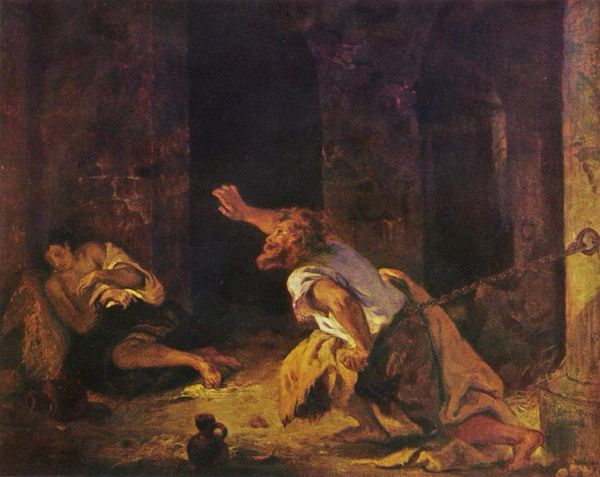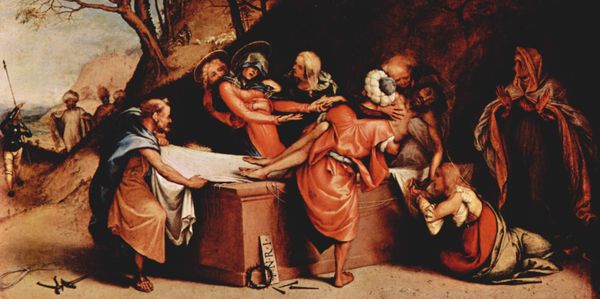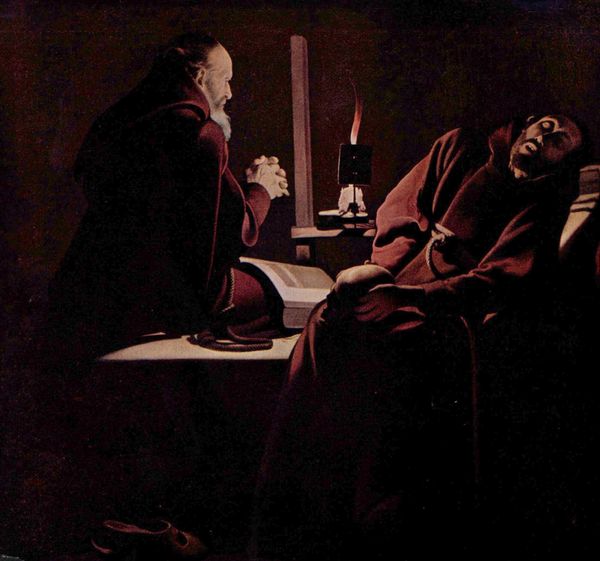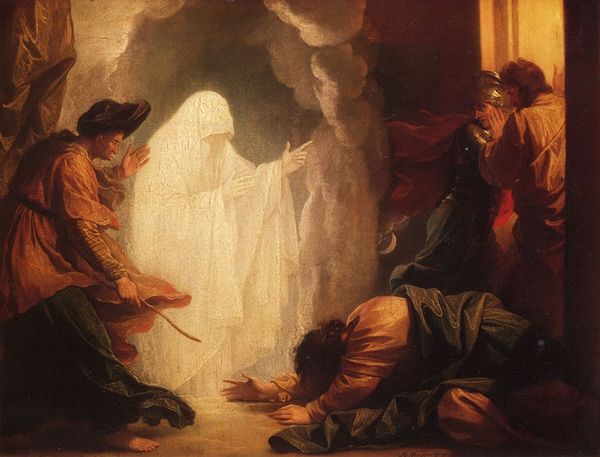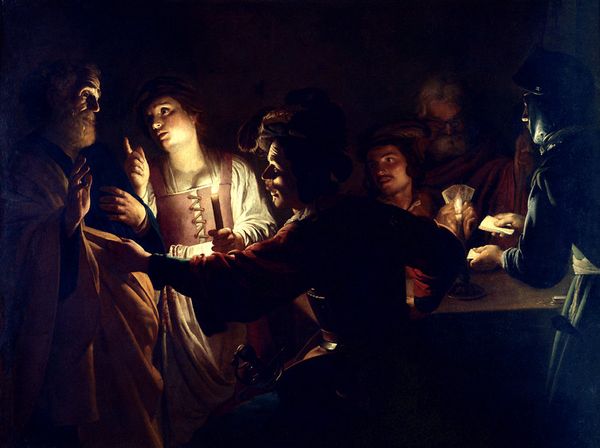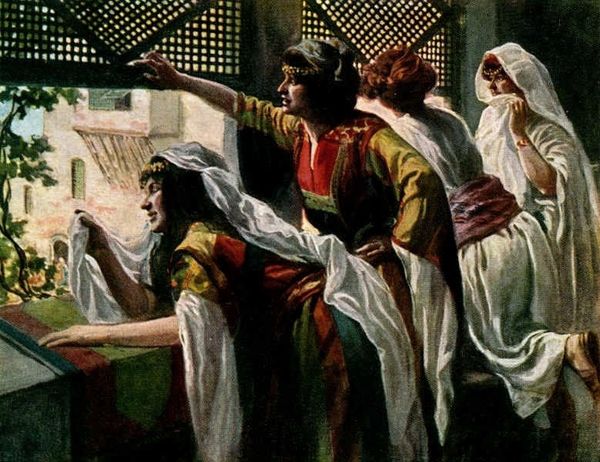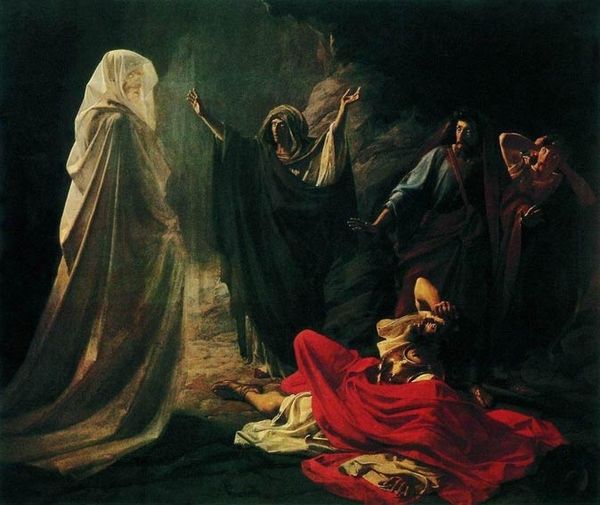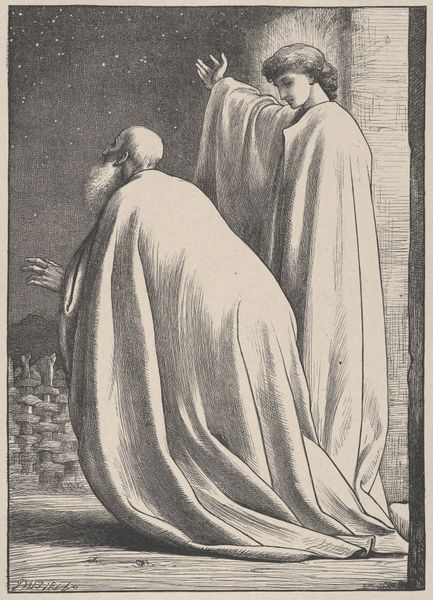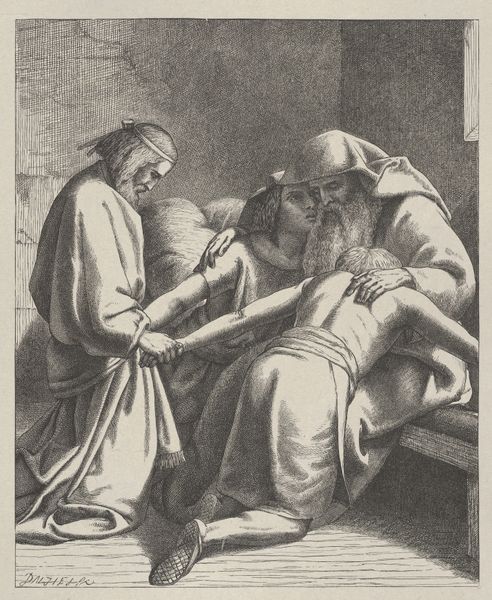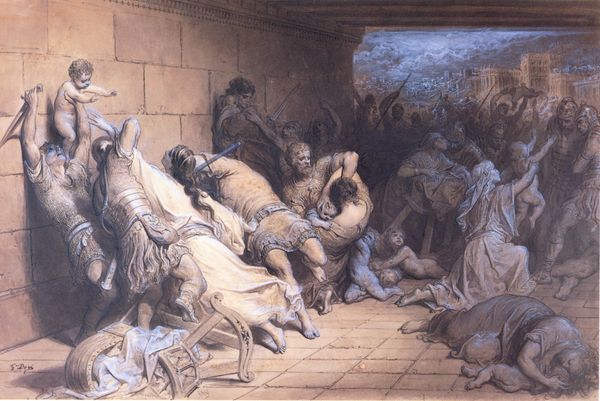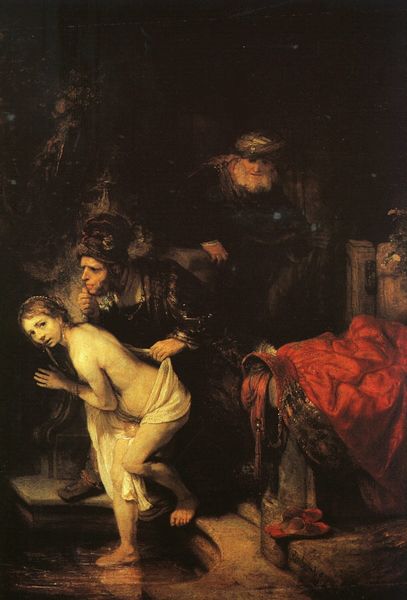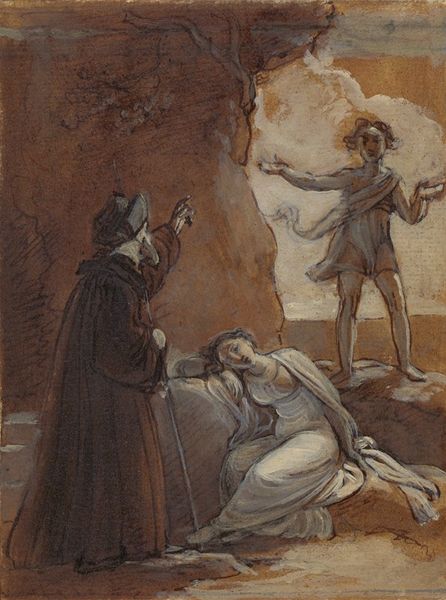
painting
#
baroque
#
painting
#
figuration
#
dim light
#
chiaroscuro
#
christianity
#
backlighting
#
history-painting
Dimensions: 96 x 136 cm
Copyright: Public domain
Curator: Standing before us is Giovanni Battista Tiepolo’s painting, "The Repudiation of Hagar," completed around 1719. Editor: It's overwhelmingly dark! I’m immediately drawn to the way the figures emerge from the shadows—almost like a stage play. The heavy cloaks and fabrics, you can almost feel their weight. Curator: The drama is characteristic of the Baroque style. Consider the setting and the symbolism—this is no accident. Tiepolo is depicting a pivotal scene from the Book of Genesis. We see Abraham casting out Hagar, his handmaid, and their son Ishmael. Editor: That stern figure doing the casting is striking! Given its heavy use of light and shadow to amplify emotions, how would you analyze its use of materials and craft here? Curator: The materiality is intrinsic to the meaning. This painting would have involved significant labor to produce, from the grinding of pigments to the layering of oils on the canvas. These opulent touches showcase elite artistry but mask the messy reality of artistic production and theological themes, of course. Note the controlled composition as well. The carefully rendered fabrics, along with the architecture framing the event. The painting almost glorifies a brutal societal practice! Editor: A dark assessment, for sure, but accurate I suspect. How were history paintings like these commissioned and received by the public? It feels very loaded, in the narratives it displays so vividly. Curator: Tiepolo likely produced this for a wealthy patron with particular religious or political motivations, or possibly even intended as a study. Images of Biblical scenes were commonly seen in wealthy households, but would also have served as teaching tools, with complicated ideologies surrounding legitimacy and social order. This artwork reminds its viewers of existing social expectations within complex relationships that impact society overall. Editor: Considering all that context and craftsmanship really reframes my first impression, and deepens how one might experience this powerful artwork. The interplay between dark artistry, material luxury, and political framing now feels uncomfortably potent. Curator: Yes, viewing art through multiple lenses certainly reveals fascinating aspects of any artistic work, especially as a visual artifact of religious power and the construction of meaning, even when we are distant observers of this artwork, after three centuries.
Comments
No comments
Be the first to comment and join the conversation on the ultimate creative platform.
